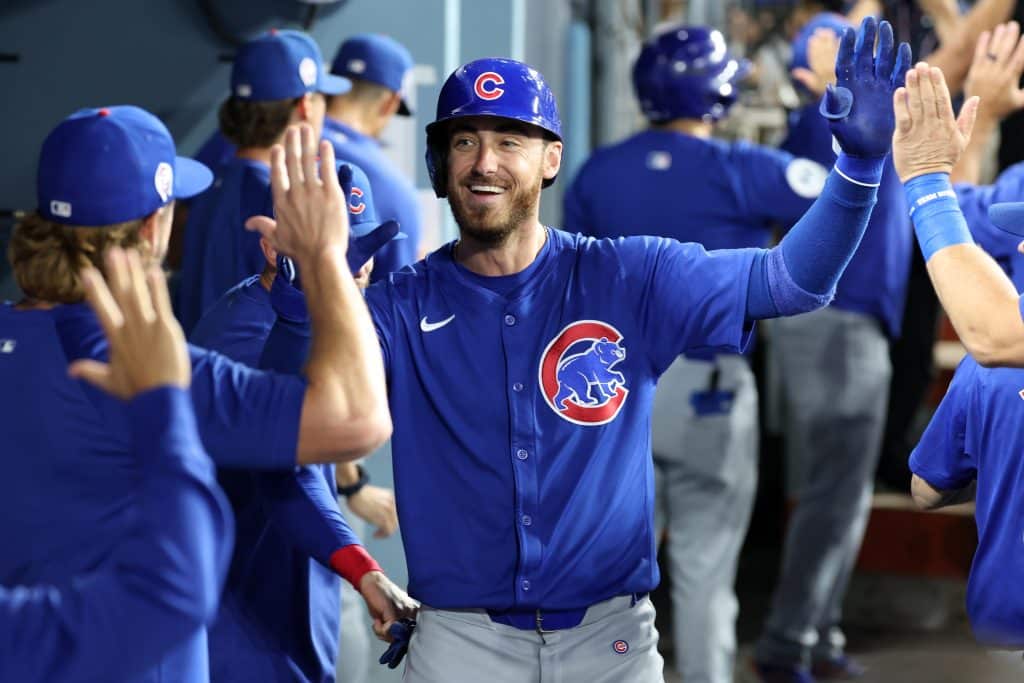The Chicago Cubs traded Cody Bellinger to the New York Yankees during the offseason in a deal that paved the way for the team to land Kyle Tucker. Between the mechanics of getting Tucker to replace Bellinger in the lineup, on the field, and on the payroll, the pair of trades can be viewed as a tandem. Tucker was traded for Hayden Wesneski, Isaac Parades, and Cam Smith, while Bellinger was traded for Cody Poteet. Ahead of the regular season, Poteet was designated for assignment before being traded to the Baltimore Orioles.
With the offseason transactions in the rearview mirror, it’s time to evaluate the trade that sent Bellinger to the New York Yankees and brought in Cody Poteet. With Poteet failing to make it to April and Bellinger fulfilling an everyday role in the Yankees starting lineup, the Chicago Cubs do not come out favorably in this deal. The fact that this move had to be made speaks volumes about where the Cubs see themselves and how they operate as a franchise. It caps them as a second-tier organization in MLB.
Reviewing the Cody Bellinger Trade
The Chicago Cubs had a busy offseason. They made a slew of moves to try and upgrade their team. President of Baseball Operations Jed Hoyer, GM Carter Hawkins, and the entire front office made a conscious effort to become an older, more experienced team with a focus on succeeding in 2025. The biggest example of this was the decision to trade for Tucker. In what was viewed by many as a corresponding move, the team then traded away Bellinger to the New York Yankees in exchange for Poteet.
Bellinger became eligible for a trade when he opted into his contract in 2025, triggering a $27M commitment from the Chicago Cubs for the 2025 season. The opt-in was included in the three-year, $80 million deal Bellinger signed before the 2024 season. The Cubs decided to dump Bellinger’s salary to pursue Tucker. Adding Tucker to the team as constructed would’ve complicated multiple position groups ahead of 2025. Rather than deal with those decisions and the financial commitment, the Chicago Cubs dealt Bellinger for Poteet.
Poteet was designated for assignment after the opening series of the year in Tokyo and subsequently traded to the Baltimore Orioles. He never saw action with the Chicago Cubs while playing in the United States. Bellinger on the other hand, is an everyday outfielder for the New York Yankees who became much more important for the Bronx Bombers with the injury news surrounding Giancarlo Stanton. So far in 2025 Bellinger is hitting .233 with 1 HR, 6 RBI, a .278 OBP, .333 SLG, and .611 OPS in 8 games.
Why the Chicago Cubs Made the Trade
Even with Bellinger’s slow start to the season, he has been much more productive with his new team than Poteet was with his. This has turned out to be a lop-sided deal with the Yankees coming out on top and being rewarded for being financially aggressive by taking on Bellinger’s salary. New York’s front office has to be thanking their lucky stars for pulling the trigger on this deal with the poor news about Giancarlo Stanton’s injury situation. Bellinger is now a key cog in their lineup and will be for the foreseeable future. The Chicago Cubs, on the other hand, opted to dump Bellinger’s salary and take on a player who is no longer in the organization.
With the addition of Tucker, they saw a problem in the outfield and the payroll structure. Tucker’s 2025 salary sits at roughly $16.5 million and Tucker has assumed the role of everyday right fielder in Chicago with the Cubs. Bellinger has experience at first base playing there for most of 2023, his first season in Chicago, and Michael Busch, the current first baseman, has plenty of experience around the infield. With such a disastrous fallout from this trade, there are two possible reactions. One, the Chicago Cubs guessed wrong on Poteet. Two, the Chicago Cubs didn’t want to risk going above the CBT.
I’m willing to bet it’s the latter rather than the former. The Chicago Cubs got next to no value on their return for Bellinger. They gave up a player who drove in 78 runs for them last year. The financial restraint the Chicago Cubs organization has shown over the last number of years reached a crescendo with this move. They are so reticent to go into the CBT that they just gave up on Bellinger. Flaunting a player of Bellinger’s caliber, they should’ve been able to do better even in a salary dump move. The $27 million to $16.5 million conversation becomes muddier when considering the additions of Justin Turner and Jon Berti.
Final Thoughts
When you add in the contracts of these utility infielders, Turner at $6 million, and Berti at $3.3, the difference is roughly $1 million. With a logjam in the outfield, the Chicago Cubs could’ve moved Bellinger to first base full-time and Michael Busch over to third, with Matt Shaw and other prospects filling in as reserves. I do not understand this philosophy and the result of this trade frustrates me as a fan of this team. I’m all for getting more experienced and proven veteran players, but when you see a total loss of a deal it gets your attention.
Finally, this move is indicative of a culture with the Chicago Cubs that defines them as a second-tier franchise. The Los Angeles Dodgers are in a tier unto themselves, but the Cubs aren’t on the level of teams like the Boston Red Sox, New York Mets, and the team they executed this trade with, the New York Yankees. They have proven themselves to be reticent to go over the CBT, and in this case, it led to a disastrous trade that can now be viewed as a total loss. In the comparison of the two Codys, Poteet is a minor leaguer with Baltimore and Bellinger is a starting outfielder for the Yankees.


